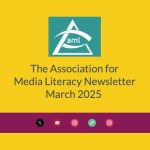Media Education: Literacy, Learning, and Contemporary Culture by David Buckingham
Media Education: Literacy, Learning, and Contemporary Culture by David Buckingham
A Review by Barry Duncan
Published by Polity Press, 2003 ( UK) but distributed in the US by Blackwell Publishing. Canadian buyers, be sure to order from Theatre Books in Toronto (416)-922-7175; otherwise, it may not be possible to obtain copies.
It would not be an exaggeration to assert that this book is the most important book on the theory and practice of media education in the last 10 years. Based on Buckingham’s 25 years in the field, it brings together his insights on all the major aspects of ME, from media theory to caveats on doing digital media. Don’t look here for lesson plans This is not a how to book. There are plenty of such classroom resources elsewhere. What we need and what he delivers is serious reflection on our practices, our use of theory, our connections with student learning and our ways of using ME to enhance the subject curriculum. I would strongly recommend that media educators use this book as a spring board for think tanks in media education communities throughout North America and beyond.
It seems that ME has been nothing but a series of extended debates. Are we protectionists? Are we production oriented? Do we advocate discriminating responses to elitist media? What Buckingham does is to review the various positions offering his own
special perspective. Having written or edited over 8 books, he can cite plenty of data and anecdotes. In many cases, he has done important, original classroom research to back up his observations. He has also spent enough time in North America and is aware of both Canadian and American viewpoints which, to be fair, resemble, in large part, practices in the UK.
Part One of the book addresses the rationales for media education; Part Two the development of the field; Part Three media learning; Part Four new directions. In each of these large areas, there are typically 5-7 topics making approximately 70 mini-sections. Buckingham covers a great deal of territory, succinctly but authoritatively. His writing is very accessible and he quickly provides us with necessary background on a controversy, offering advice in a direct and often provocative way. Here are two examples.
“Where Postman wants to return to a situation where children know their place, Tapscott argues that adults should try to ‘catch up’ with their children.”
“We can no longer assume that our students will be sharing similar experiences with each other, let alone that they might do so with us. And we can no longer trust in a simplistic account of ‘identity politics,’ in which media images are seen to have singular and predictable consequences in terms of our students’ perceptions of their place in the world.”
Buckingham sees serious limitations in the inoculative, protectionist approaches ( The media give us evil and misinformed representations.) and in the ‘demystification approach’ whereby teachers will help students see through ideological constructs in the media. He is suspicious of the manifestos of the critical pedagogy movement as espoused by academics such as Henry Giroux. Why? Because it all seems to be more rhetoric than reality and ignores practical classroom realities. He wants us to examine our pedagogies so that students can move beyond the expected, teacherly answers.
What he does like ,however, is student – centered learning in which teachers begin by finding out what young people already know about the media. He believes strongly in practice especially with new digital media which facilitates complex image manipulation. He gives examples of student parodies of media texts and provides us with interesting accounts of their problematic reception. Above all, he wants media studies to have conceptual coherence and high quality. With so many untrained media teachers, this goal is of paramount importance.
Obviously in a 200 page book, Buckingham does not have time to deal in an in-depth manner with all the current debates but he has deliberated on the most important. That he has tried to avoid settling scores with his fellow UK academics (The temptation would be strong!) is especially admirable. I know this book will travel well. I would love to have your feedback.


